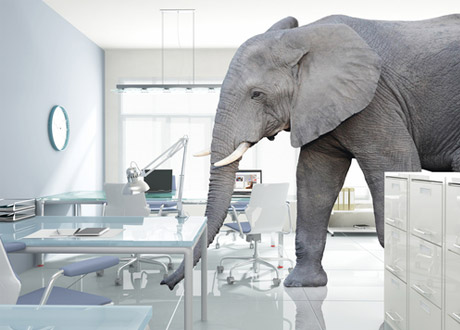By: Ole Vilster
Innovation is often more about combining what is already there than reinventing the wheel in a creative manner. In this article you will learn how to apply solutions from other industries to your problem at hand by using… metaphors. This method I am about to present is called Metaphor Safari and is based on professor Ikujiro Nonaka’s theory on knowledge management.
How do you find durable solutions to a tough innovation challenge? That question kept me up at night when I headed one of the concepting teams at Nokia. Normally we would reach a solution by ideating from our insights, prototype possible solutions and test them with users. However, I couldn’t help the feeling that we were missing something. That we were trying to reinvent something that was already there. That brainstorming techniques and loads of yellow stickers wouldn’t lead us to sustainable solutions to increasingly wicked problems.
But then I stumbled upon professor Nonaka’s writings. Together with his colleague Takeuchi he had (in 1986) laid the foundation of today’s agile practices within software development and in 1991 he published his book and article on “The Knowledge-Creating Company”. Here he introduced a model of how to turn tacit into explicit knowledge. In this context, what really resonated with my challenge was how analogies can act as an intermediate step between imagination and logical thinking. That by using metaphors we can articulate and explore insights in a more intuitive way. I realized that we – instead of creating new solutions – should explore how people within another field or industry have already solved the same kind of problem.
We baptized the method “metaphor safari” and it filled a hole in my innovation method vocabulary.
How does it work?
You are in the need of finding a solution to a troublesome challenge. It can be any challenge: A new way to organize your work, a new product – or maybe a new business. You know that you have to be innovative – but you can’t only rely of the creativity of yourself and your team. You feel that you’re not the first one to face that type of challenge, so you want to explore what’s already out there.
1) First you define the problem at hand. Make it as generic as possible. Ask yourself: What is really the problem here? Avoid any product or industry related terms, but focus on what job the solution should serve.
Example: Today traditional libraries are under pressure from new competitors (internet search, online book-stores etc.) so they are facing the generic problem: how can we service our customers when they are not visiting our store?
2) Then ask yourself: Where else could the problem exist? In other words, consider how the problem would look like in other industries or fields. In the former example there will surely be plenty of other types of service organizations that would have the same problem: how are customers served in the healthcare system? What about supermarkets? Or bookstores? You could also view it from the perspective of different professions: how would an engineer, an architect or a social worker see the problem?
3) Then pay a visit to the potentially most inspiring places and explore how they have solved the problem. Meet the people, see how it works. Use photos and short stories to capture their solutions. In some cases it’s useful to crowd source the data collection – and it can uncover cultural differences on how to solve a wicked problem. In the library example you might visit the virtual Tesco store, examine how telemedicine works and investigate how Amazon retains their customers.
4) Now collapse all your material into a collage. When organizing the collage you should consider what the critical parameters are. Is it technology? The presence of a real person? Ease of use? Just by modeling the collage you might already get some new ideas on how to solve the problem. So make sure to write them down and keep them for later.
5) Then it’s time to inhale the data and reconcile. First look for patterns: Can you deduct any basic principles? Hang the collage on the wall and invite people to share their hypothesizes. Ask them what they see.
6) When you will have consolidated your data, it’s time to revisit your first problem. Consider how the different solutions could make sense in your world. Can you apply some of the principles? How can you reuse, combine or improve some of the solutions so they solve your problem in the best way? In most cases the result will be unexpectedly simple and useful.
The metaphor safari-method rests on the assumption that living reality outperforms imagination when it comes to find good solutions to difficult problems. That you as an innovator should leave the great wall of Post-its and instead visit and learn from the reality out there.
And by the way: the library found a solution to their problem. They transferred the Tesco virtual store to their own reality. At different bus-stops in Denmark you can now you meet posters with book covers and QR codes from which you can download and borrow e-books.
By Ole Vilster
About the author

Ole Vilster is an expert within corporate entrepreneurship. He facilitates incubators for companies or consortiums and help large organizations to grow employee-driven innovation. Ole has 12 years experience from R&D and is educated within IT, innovation and social pedagogic. Previously he headed the SW concepting team in Nokia Denmark and today he is the owner of Better Monday.
Image: Elephant in modern office from Shutterstock.com

